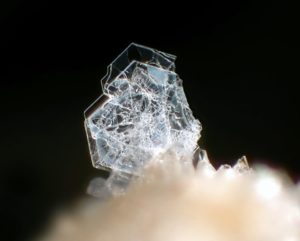
These shinny, naturally occurring, crystalline chemical compounds are the basic and important raw materials that are necessary for our social, technological and economic development. All segments of society utilize minerals. You will find minerals in the buildings you work and live in, as well as in the roads you drive on. Minerals are useful to humankind in more than one way. This is the reason their part of our everyday lives. So what are the common minerals and their uses? Let’s find out.
Mined in Africa, Quartz is perfect for use in spectrographic and prism lenses as well as in heat-ray lamps. Why? This mineral is transparent in UV light and can turn the polarization light’s plane. Apart from the aforementioned things, quartz is utilized in precision instruments, abrasives, paints, glass, and refractory materials.
Aluminum
Of all the metallic elements in the Earth’s crust, aluminum is the most profuse. Aluminum is primarily extracted from bauxite ore. Usually, bauxite ore is mined in African and Latin American countries such as Brazil, Guinea, Jamaica, and Guyana. The United States does not produce any aluminum and imports it from the aforementioned countries. Aluminum is used in many different industries including building and construction, bottling and canning, packaging, electrical, airplanes, and automobiles.
Bauxite
Usually converted to aluminum, bauxite consists of hydrated aluminum oxides and is a rock mineral. Bauxite is generally mined in Africa. However, mining of bauxite takes place in other places as well such as Australia, South America, and the Caribbean.
Tungsten, tantalum, and tin
The main sources of revenue for the Republic of Congo, tungsten, tantalum and tin are used to manufacture mobile phones and computers (desktops and laptops). These minerals are primarily mined in African countries such as the Republic of Congo.
Copper
Copper is primarily mined in Australia, United States, China, Peru, and Chile. There are many things copper is used in including jewelry, general and consumer products, industrial equipment and machinery, electrical wires and cables, transportation, coins, electronic components, roofing materials, and electrical appliances.
Silver
Silver in primarily mined in Africa. However, mining also takes place in Asia and South America. Silver is used in many things including batteries, wound care bandages, coins, jewelry, medals, cell phone covers, catalytic converter, electronic and electrical devices, photography, silverware, and industrial applications.
There you have—some of the most common minerals and their uses. Using the aforementioned information, individuals, and companies can determine the minerals they need and where to get them from.









